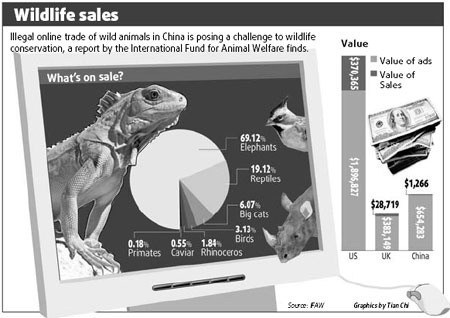TOP STORIES Reversing Coral Reef Decline in Hawai`i -- A New Look at a Critical Problem
Reversing Coral Reef Decline in Hawai`i -- A New Look at a Critical Problem
USGS Newsroom - www.usgs.gov
20 Nov 2008
New discoveries about how even small amounts of sediment can severely impact fragile ocean coral and suggestions about solutions are illustrated and described in a new book written by a team of U.S. Geological Survey (USGS) scientists and their colleagues. Coral reefs are in decline worldwide, and a leading cause is the runoff of sediment and pollutants from nearby land surfaces.
After a multiyear study of the long fringing coral reef off south Moloka'i, the scientists' findings have been published as "The Coral Reef of South Moloka'i, Hawai'i -Portrait of a Sediment-Threatened Fringing Reef." . . . .
The reef off south Moloka'i is the longest fringing coral reef in the Hawaiian chain and one of the best preserved. However, it is also severely threatened by large loads of sediment that wash off land heavily altered by farming, ranching, grazing by wild goats, and other activities. The book sheds new understanding of the causes and results of the distinct band of muddy water. This was first reported by the marine explorer Jacques Cousteau decades earlier - a process that now obscures the reef nearly every day.
Poor safety training blamed for biologist's death
Associated Press (Posted by YahooNews - news.yahoo.com)
19 Nov 2008
B Christie
A wildlife biologist who was never trained about disease risks he could encounter while on the job died from the plague after handling a deceased lion without protective gear, according to a federal report. . .
The report by a National Park Service review board said Eric York, 37, didn't wear gloves or a protective respirator in October 2007 while handling and performing a necropsy on a mountain lion that had died of the plague.
York worked in the park's cougar collaring program and fell ill days after he used a locator beacon to track a mountain lion that had stopped moving.
He recovered the body, took it to his home at Grand Canyon National Park and did a necropsy in his garage. Several days later, be began feeling ill and went to a clinic.
 Dolphins: One floating, another euthanized
Dolphins: One floating, another euthanizedThe Courier
21 Nov 2008
A Passeggio
Area: Monmouth Beach, New Jersey, USA - Map It

A dead dolphin was spotted floating near the Route 36 Highlands bridge early Friday morning and another was seen stranded during the weekend, but officials said the pair were not part of the original pod of bottlenose dolphins visiting the waterways.
The bodies were preliminarily identified as short-nose common dolphins, which prefer warm to cool water — 52 to 88 degrees — in the ocean or offshore, according to the National Oceanic and Atmospheric Administration’s Web site. . .
NOAA was awaiting species confirmation and a necropsy of both mammals as of press time.
 National HPAI Early Detection Data System (HEDDS) Update
National HPAI Early Detection Data System (HEDDS) UpdateNBII Wildlife Disease Information Node
21 Nov 2008
Area: United States
Highly Pathogenic Avian Influenza Early Detection Data System (HEDDS) is an avian influenza data sharing repository. NBII and a network of partners across the nation have created HEDDS to hold data from different surveillance strategies and to provide a comprehensive view of national sampling efforts.
Recent HEDDS Activity
- The LPAI H5N1 results table has been updated with information on samples collected on Nov 4, 2008 from a Northern pintail in Stoddard county, MO.
- The LPAI H5N1 results table has been updated with information on samples collected on Oct 26, 2008 from a Northern pintail in Mason county, IL.
- The LPAI H5N1 results table has been updated with information on samples collected on Oct 25, 2008 from a Mallard in Grundy county, IL.
- The LPAI H5N1 results table has been updated with information on samples collected on Nov 6, 2008 from a American Wigeon in Columbia county, OR.
LAST WEEK'S TOP READ LINKS
- Boy, 15, Becomes 1 of Only 3 Known Rabies Survivors Worldwide
- Scientists can't explain cause of amphibian extinction crisis
- Lack of die-offs baffles scientists
- Migratory birds do not cause bird flu: experts
- 'Jelly balls' may slow global warming
- Evaluating the links between climate, disease spread, and amphibian declines [journal article]
- Feeding the birds has an impact on their reproduction
- First Holistic Guide to Primate Disease Covers Critical Gap in Global Health
- Rare Salamander Dies at National Zoo
- PHOTO IN THE NEWS: "Extinct" Primate Found in Indonesia
OTHER WILDLIFE HEALTH NEWS
 Photo courtesy The Guardian - Week in Wildlife
Photo courtesy The Guardian - Week in Wildlife- Global warming already affecting species [includes audio broadcast]
- NH Fish and Game to study bat disease
- UK officially free from Avian Influenza (AI)
- 'The Vanishing Frog' [includes slideshow]
- Bird poison fines axed after EU reviews CAP overhaul
- Rabies on the rise in AZ - Arizona, USA - Map It

 Internet growing threat to wildlife - Photo courtesy of China Daily
Internet growing threat to wildlife - Photo courtesy of China DailyDeer Disease News
- Elk disease moves West: Discovery of neurological disease in western Wyoming worries biologists [CWD]
- Deer disease testing to continue [CWD, Illinois, USA]
- Park service might kill deer on Md. battlefields to control disease [CWD, Maryland, USA]
- Deer population rebounds [Epizootic Hemorrhagic Disease, Tennessee, USA]
- DNR Interview: CWD remains issue [YouTube Video]





No comments:
Post a Comment